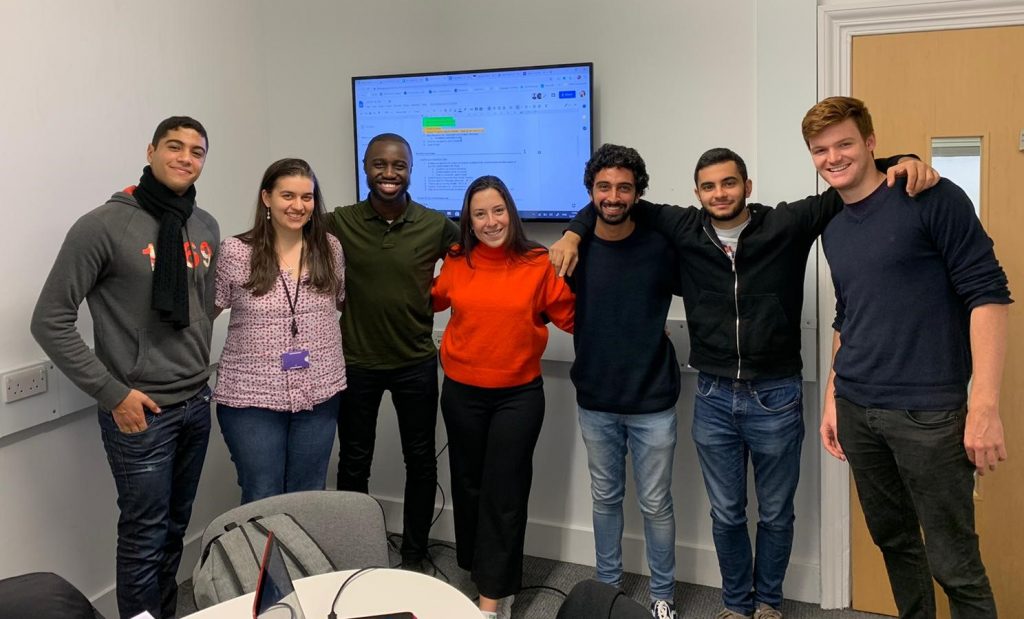UCL Autosort Team 2020

Team Members:
- Patricia Achaerandio
- Pierre Chidiac
- Julia Elkouby
- George Imafidon
- Costas Paschalides
- Ahmed Salem
- Josiah Youd
Supervisor
Professor Mark Miodownik
The Project
Autosort’s project was the design and prototype of an automatic waste-sorting bin which identified item types using a multi-sensor sensing system that included computer vision, sound recognition and a decision-making artificial intelligence algorithm. The aim was to reduce contamination and cross-contamination of the present waste streams to increase harvestable value of the raw materials and improve UCL’s recycling rate, while removing user input from the disposal of waste process.
The Design
The design emphasized user convenience by having a single inlet for all waste types. For this to be feasible a storage system was incorporated with a novel triangular slider mechanism used to separate items thrown in at the same time. Actuation systems were added to sort the items into their correct locations following use of material identification and contamination sensing specially-developed software. Stress and vibrational analysis of the design was performed to ensure that the design matched the current bins at UCL aesthetically and exceeded their current volumetric capacity safely and inexpensively. The results were very promising with the surface contamination software successfully quantifying contamination at high accuracy while material type classification was achieved with >96% accuracy.
 Close
Close

